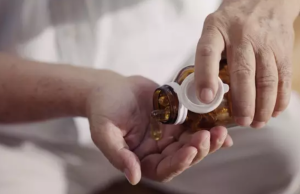
Gardening enthusiasts are continually finding innovative and space-efficient ways to grow their favorite vegetables, especially when faced with limited space. One such creative method gaining popularity is growing peppers in hanging plastic bags.
This unique approach not only maximizes space but also offers several advantages, making it an ideal choice for both seasoned gardeners and beginners. In this article, we’ll explore the benefits and steps involved in growing peppers in hanging plastic bags.
Materials Needed
Before you start your hanging pepper garden, gather the following materials:
Plastic handbags (reusable and sturdy ones work best)
Potting soil
Pepper plant seedlings or seeds
Scissors
Fertilizer
A sturdy support structure (such as a trellis, wooden frame, or metal stakes)
Watering can or hose
Step-by-Step Guide

Select the Right Bags: Choose plastic handbags that are strong enough to support the weight of the peppers, potting soil, and water. The bags should also have drainage holes to prevent waterlogging.
Prepare the Soil: Fill each plastic bag with high-quality potting soil, leaving about 2 inches of space from the top to allow for watering. Ensure the soil is well-aerated and rich in nutrients.
Planting: Depending on the size of the bags, plant 1-2 pepper plants in each bag. Dig small holes in the soil and place the seedlings or seeds according to the recommended spacing for the specific pepper variety you’re growing.
Fertilize: Apply a slow-release fertilizer to the soil according to the package instructions. This will provide essential nutrients to the pepper plants throughout the growing season.
Watering: Water the pepper plants thoroughly after planting to settle the soil.
Subsequently, water the bags regularly to keep the soil consistently moist but not waterlogged. Hanging bags may dry out faster than traditional containers, so monitor their moisture levels closely.
Support Structure: Hang the plastic bags on a sturdy support structure. Make sure it can bear the weight of the plants as they grow and become laden with peppers. Adjust the height of the bags as needed to ensure proper air circulation and sun exposure.
Sunlight: Place your hanging pepper bags in a location where they receive at least 6-8 hours of direct sunlight per day. Peppers thrive in full sun.
Pruning: As your pepper plants grow, consider pruning them to encourage bushier growth and better airflow. Remove any yellowing or dead leaves and any competing shoots.
Pest and Disease Management: Keep an eye out for common pepper pests and diseases. If you notice any issues, address them promptly with appropriate treatments to prevent them from spreading.
Harvesting: Once your pepper plants start producing fruit, regularly harvest the peppers when they reach the desired size and color. Harvesting encourages further fruit production.
Benefits of Growing Peppers in Hanging Plastic Bags
Space Efficiency: Perhaps the most significant advantage of this method is its space-saving nature. Hanging plastic bags can be hung in virtually any location with ample sunlight, whether it’s a small balcony, porch, or even inside a greenhouse. This means that even individuals with limited outdoor space can enjoy homegrown peppers.
Improved Pest Control: By suspending your pepper plants, you reduce the risk of pests and diseases. This not only makes it easier to spot and manage any issues but also minimizes soil-borne problems, as the soil used is generally fresh and sterilized.
Enhanced Drainage: Hanging bags provide excellent drainage, reducing the chances of overwatering and root rot, which can be common issues in traditional pots or garden beds.
Easy Access: Harvesting your peppers becomes more accessible when they are suspended at eye level. You can simply reach out and pick ripe fruits without the need to bend or kneel.
Portability: Hanging bags are portable, making it simple to rearrange your garden as needed. If you decide to move your pepper plants to a different location or bring them indoors during inclement weather, it’s a straightforward task.




















